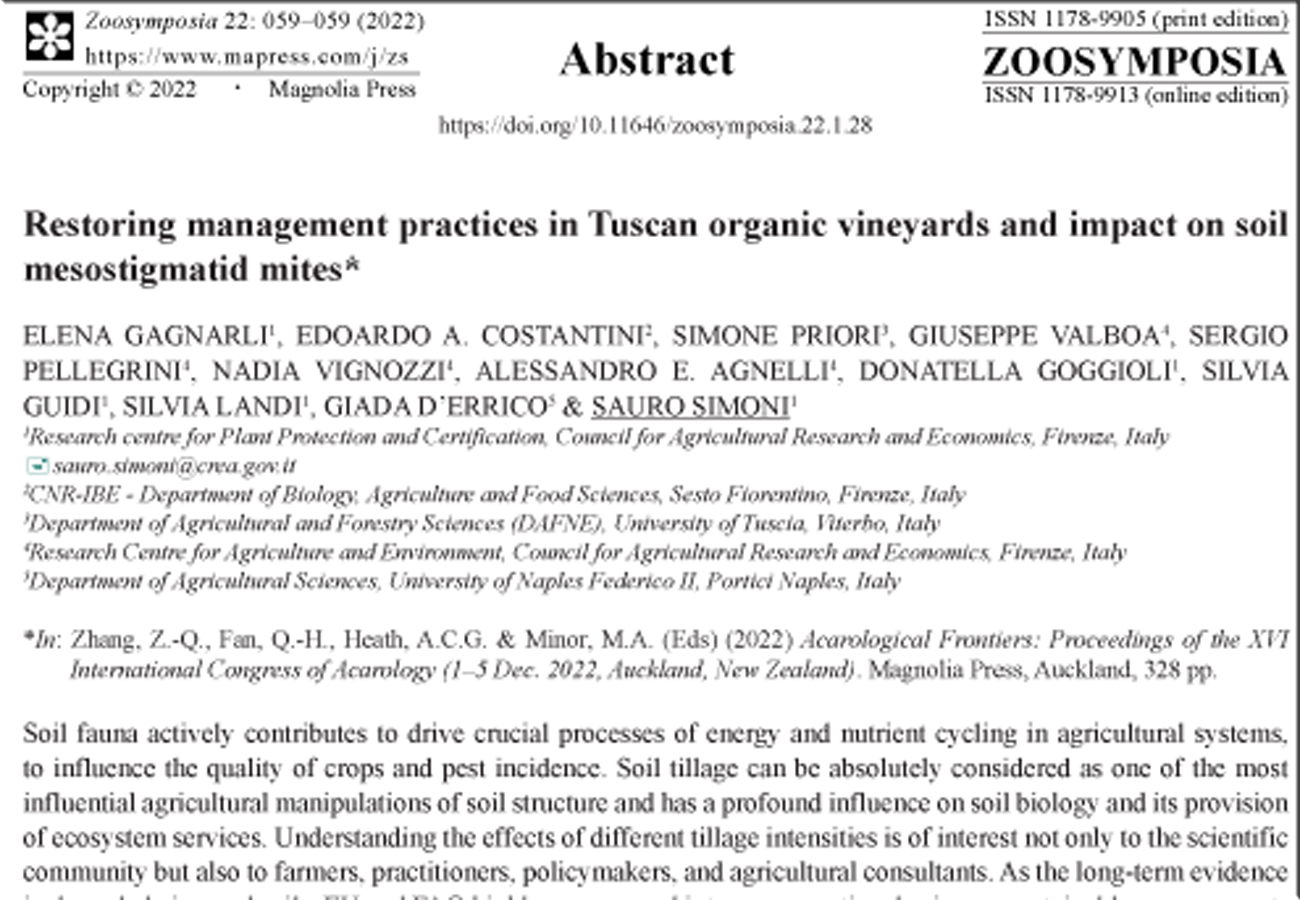Abstract
Soil fauna actively contributes to drive crucial processes of energy and nutrient cycling in agricultural systems, to influence the quality of crops and pest incidence. Soil tillage can be absolutely considered as one of the most influential agricultural manipulations of soil structure and has a profound influence on soil biology and its provision of ecosystem services. Understanding the effects of different tillage intensities is of interest not only to the scientific community but also to farmers, practitioners, policymakers, and agricultural consultants. As the long-term evidence in degraded vineyard soils, EU and FAO highly recommend inter-row practices basing on sustainable managements and good agronomic practices (GAPs) to re-install soil functionality. In this study, we aimed at evaluating effects of different GAP practices that can improve soil recovering on some soil quality indicators, with emphasis to edaphic mesostigmatid mites.
References
-

